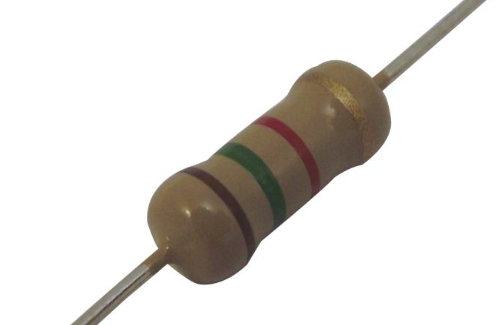Introduction Of Through Hole Resistors
Through hole resistors are fundamental electronic components that play a crucial role in the world of electronics and circuitry. These resistors are named for the way they are mounted on a circuit board, by passing their leads through holes on the board and soldering them on the other side.
Referred to as a leaded resistor, the through hole resistor serves the purpose of impeding the flow of electrical current in a circuit. This resistor type manifests in three distinct variations: axial, boasting leads at both ends; radial, featuring leads pointing downward; and pluggable, with terminals designed for insertion into the PCB. Among these variations, the carbon film axial resistor stands out as the most prevalent type of through hole resistor, commonly employed for its versatile applications.
Certain through hole resistors find their niche in breadboarding, prototyping, or applications that steer clear of soldering. However, a significant number of through hole resistors are seamlessly integrated into printed circuit boards (PCBs). These components are typically provided on bandolier tape, and specialized equipment takes charge, cutting and shaping the leads before insertion. The entire PCB undergoes the next phase, traversing through a wave solder machine that diligently solders the leads in place, ensuring a secure and reliable connection.

Understanding Through Hole Resistors
1. Construction and Design:
Through hole resistors, also known as axial resistors, have a cylindrical shape with leads extending from both ends. The leads are designed to fit through holes on a circuit board, making them suitable for manual assembly and soldering. The cylindrical body typically consists of a resistive element made from materials like carbon, metal film, or metal oxide, providing the desired resistance to the electric current flowing through the circuit.
2. Types of Through Hole Resistors:
There are various types of through hole resistors, each catering to specific applications and requirements. Some common types include:
Carbon Composition Resistors: Made from a mixture of carbon granules and insulating ceramic, these resistors are known for their stability and reliability.
Metal Film Resistors: Featuring a thin metal film as the resistive element, these resistors offer high precision and low noise, making them suitable for sensitive applications.
Wirewound Resistors: Constructed by winding a resistive wire around an insulating core, wirewound resistors excel in handling high power loads and maintaining stability under challenging conditions.
3. Applications of Through Hole Resistors:
Through hole resistors find applications across a wide spectrum of electronic devices and systems. Some key areas include:
Amplifiers and Signal Processing Circuits: Through hole resistors are integral components in amplifiers and signal processing circuits, where precision and stability are paramount for accurate signal amplification and processing.
Power Supplies: In power supply circuits, these resistors help regulate voltage and current, ensuring a steady and controlled flow of electrical energy.
Voltage Dividers: Through hole resistors are commonly used in voltage divider circuits, enabling the creation of reference voltages or the division of input voltages.
Filter Circuits: Through hole resistors play a role in filter circuits, where they are employed to control the frequency response and filter out unwanted signals.
Characteristics and Considerations
1. Resistance Value:
The primary function of a resistor is to provide resistance to the electric current. Through hole resistors come in a variety of resistance values, ranging from ohms to megaohms, allowing engineers to choose the appropriate component for the desired application.
2. Power Rating:
The power rating of a through hole resistor indicates the maximum amount of power it can dissipate without overheating. It is crucial to select a resistor with a power rating that exceeds the actual power dissipated in the circuit to prevent damage or performance degradation.
3. Tolerance:
Tolerance represents the allowable variation in the resistor’s specified resistance value. Through hole resistors are available with different tolerance levels, such as 1%, 5%, or 10%. The choice of tolerance depends on the precision required for a particular application.
4. Temperature Coefficient:
The temperature coefficient indicates how the resistance of the resistor changes with temperature variations. It is expressed in parts per million per degree Celsius (ppm/°C). Low temperature coefficients are desirable for applications where stability over a range of temperatures is crucial.
5. Noise and Stability:
In applications where low noise and high stability are essential, engineers may opt for through hole resistors with features like metal film construction. These resistors minimize electrical noise and exhibit stable performance over time.
KUKE insists on supplying only original electronic components, such as high quality through hole resistors. If you have any question, please contact KUKE immediately.